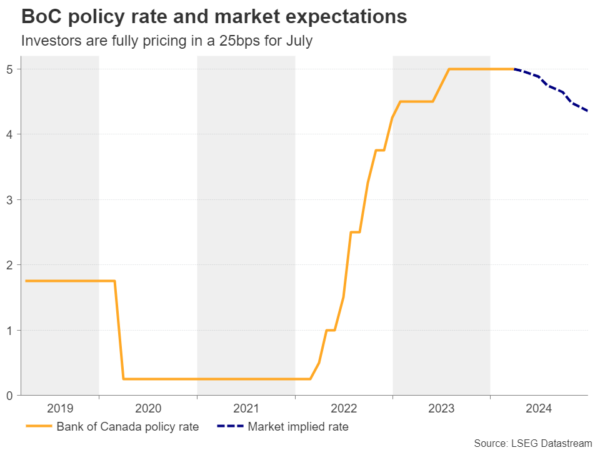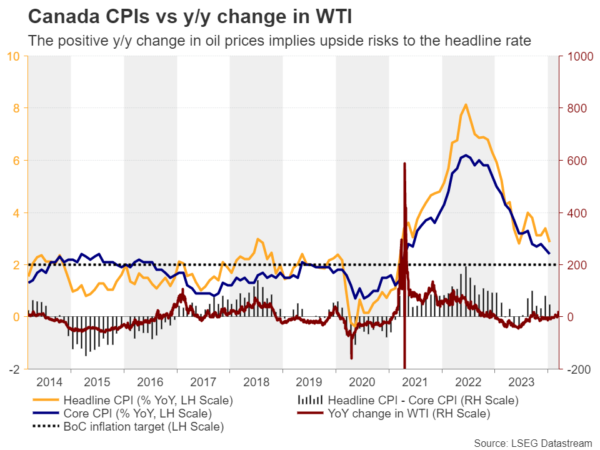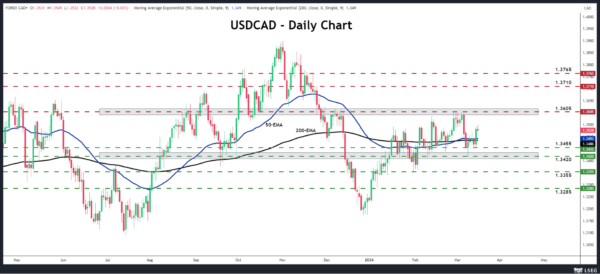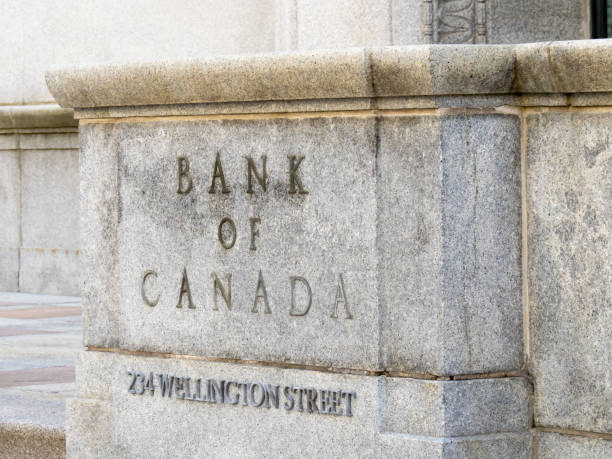- BoC sounds less dovish than expected
- Investors pencil in a first 25bps cut in July
- Canada’s CPI numbers could affect market expectations
- The data is scheduled for Tuesday at 12:30 GMT
Will the BoC cut interest rates after the Fed?
At its latest gathering on March 6, the Bank of Canada (BoC) decided to keep interest rates unchanged at 5% as expected, but the statement accompanying the decision and Governor Tiff Macklem himself signaled concerns about high underlying price pressures, with the Governor adding that more progress is needed before they start considering rate cuts.
This, combined with data releases after the decision, convinced investors to push back their rate cut bets. Although they are assigning a 20% chance for a quarter-reduction at the upcoming meeting on April 10, they are fully pricing in such a move for July, while the total number of basis points worth of rate reductions for the whole year stands at 65, interestingly less than the 75bps currently projected for the Fed.

Jobs report corroborate BoC’s less dovish stance
Just two days after the last meeting, the employment report for February revealed that the unemployment rate ticked up to 5.8% from 5.7%. but that the economy added more jobs than in January, confounding expectations of a slowdown. Coming on top of the better-than-expected GDP data for Q4, the jobs report added to speculation that the BoC could wait for a while longer before lowering borrowing costs.
Will inflation prove to be stickier than expected?
With all that in mind, loonie traders are now likely to shift their attention to Tuesday’s CPI numbers for February as they try to get a clearer picture of when policymakers are likely to hit the cut button. According to the Ivey PMI for the month, prices eased in February, suggesting that after January’s slowdown, at least the core CPI metrics may continue to drift south. That said, with the y/y change in oil prices turning positive lately, the headline CPI rate may prove to be stickier, as was the case with US inflation.

Although analysts at the National Bank of Canada (NBC) said recently that the central bank will soon need to cut interest rates due to weak private domestic demand and flat private-sector employment, a potential rebound in the headline CPI rate back above 3%, which is the upper bound of the BoC’s 1-3% target range, could add to speculation that officials could remain sidelined for a while longer.
Can the loonie stage a strong comeback?
The Canadian dollar could benefit if inflation proves to be hotter than expected, but calling a long-lasting uptrend against its neighboring US dollar would still be premature. The Fed will announce its monetary policy decision on Wednesday, and an upwardly revised dot-plot could add fresh fuel to the greenback’s engines.
From a technical standpoint, dollar/loonie has been in an uptrend since December 27. However, despite the latest leg north, the overall picture suggests that the trend has been losing steam lately. Hotter than expected inflation could result in a pullback but the bulls may be tempted to buy again from near the 1.3455 zone and aim for the 1.3605 area which offered resistance between February 28 and March 5.
For the outlook of this pair to change to bearish, a decisive dip below 1.3420 may be needed. Such a move may encourage the sellers to push the action down to the low of January 31, at around 1.3355.










